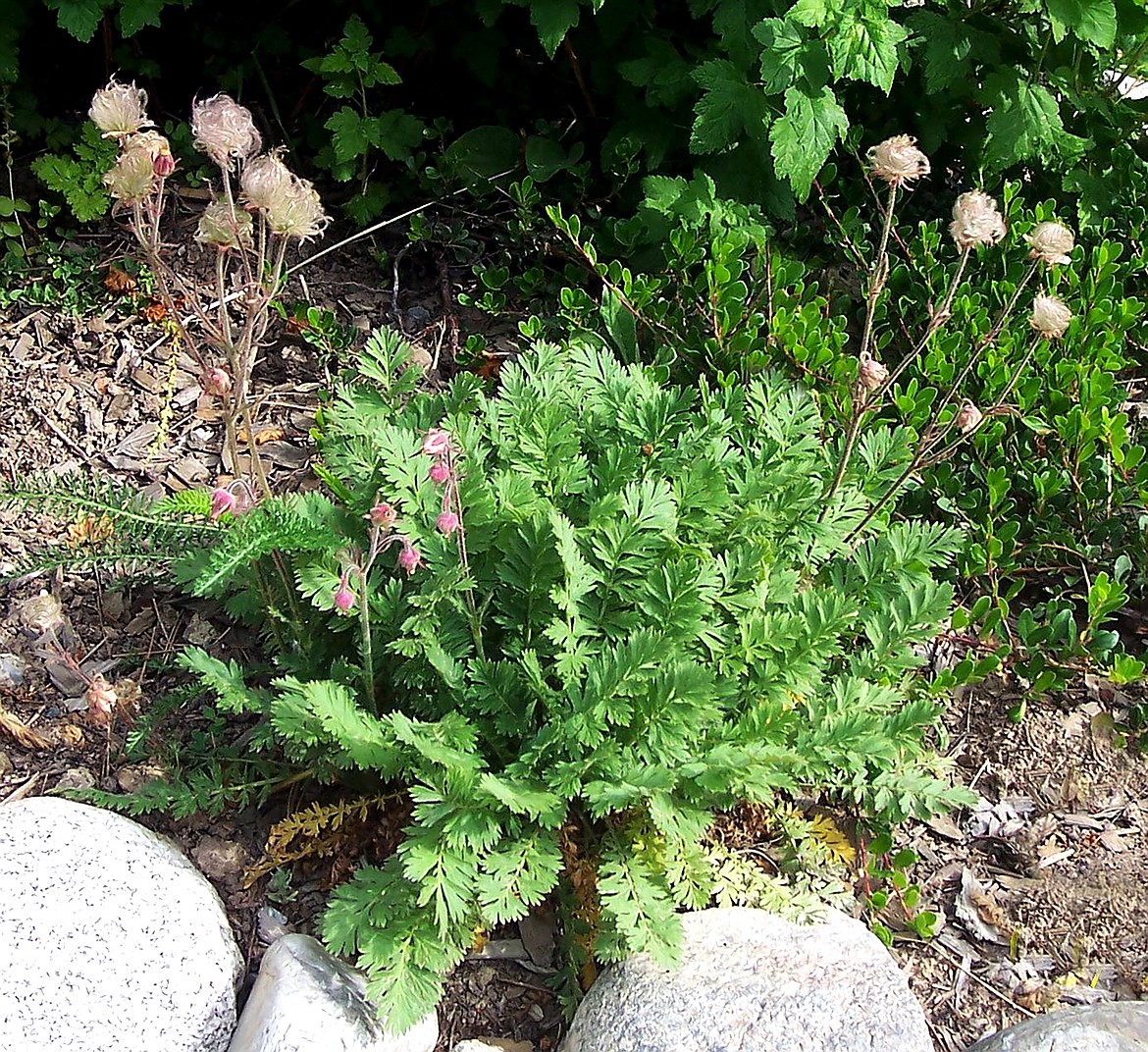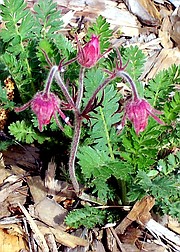Prairie Smoke delights with year-round interest
A delightful native perennial with year-round interest, Prairie Smoke (Geum triflorum) is an early bloomer. Once plentiful from coast to coast in the northern United States and southern Canada, Prairie Smoke is now rare in many areas due to development and competition from non-native invaders.
As its common name suggests, Prairie Smoke thrives in natural prairies, dry plains, gravelly soils and grasslands at low to subalpine elevations. In the garden, it tolerates many soil types as long as they are well-drained. A minimum of six hours of daily sun will keep it lush and green, but some shade, especially on hot summer afternoons, will be appreciated.
Prairie Smoke plants form an attractive rosette of finely divided pinnate leaves resembling fern fronds, six to ten inches across. Between May and July, depending on elevation, blossoms rise on 12- to 18-inch stalks, usually in nodding umbels of three or multiples of three. Hence the species name “triflorum” which translates from Latin as “three-flowered.” While Prairie Smoke is not an evergreen, the foliage lasts through the winter turning a deep red in the fall.
Blossoms hang downwards and are mostly enclosed in dark pink to burgundy-colored sepals with a small opening at the bottom. They produce both pollen and nectar attracting primarily bumblebees that often “buzz-pollinate” the flowers. A bumblebee grasps the flower at the opening, and beats its wings, shaking pollen onto its abdomen. Pollen is mixed with nectar and packed into a pouch for transport. Some pollen sticks to the bumblebee's legs and abdomen and is transferred to the next flower.
Other nectar-gathering insects, including wasps, beetles, and bees, chew a small hole in the top of the blossom in order to access the nectar directly. Ants will take advantage of these pre-drilled holes to feed as well.
Spring blossoms turn into summer fruits for additional interest in the garden. The blossom stems stiffen bringing the seed heads upright. The seeds, developing in clusters, grow pinkish, feathery three-quarter-inch tails. The effect is that of small puffs of smoke giving rise to the plant's common names Prairie Smoke and Old Man's Whiskers. The feathery seed plumes stick to animal fur and human clothing for effective disbursal.
Prairie Smoke spreads slowly by rhizomes making it a perfect choice for borders, in rock and perennial gardens and as a ground cover. The fern-like leaves and wispy seed heads add texture and the leaves provide fall color. Drought-tolerant and relatively free of pests and diseases, easy-care Prairie Smoke is also deer-resistant.
Native American tribes and early pioneers boiled the roots making a tea that resembles sassafras, though weaker in flavor. It was used for coughs, sore throats and in dressings on wounds.
Prairie Smoke grows in the dry rock habitat of the North Idaho Native Plant Arboretum, 611 S. Ella Ave., in Sandpoint. Pictures and a description are found on page 181 of "Landscaping with Native Plants in the Idaho Panhandle", a KNPS publication available at local bookstores and the Bonner County History Museum.
Native Plant Notes are created by the Kinnikinnick Native Plant Society. To learn more about KNPS and the North Idaho Native Plant Arboretum, go online to www.nativeplantsociety.org.



